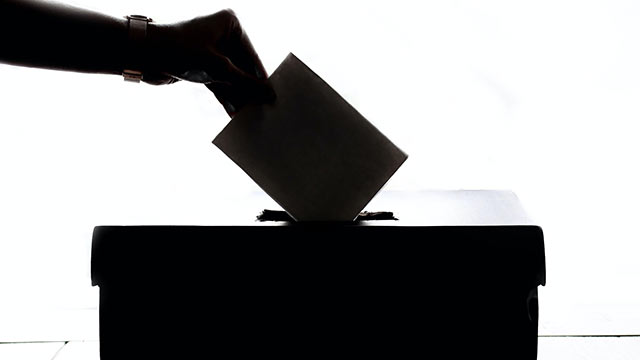Can a 90-minute-long debate change the course of a presidential election? How about a nine-word tweet?
A Northwestern University data scientist has developed a novel forecasting platform that updates the odds of a win by President Trump or Joe Biden each hour. With this level of precision, viewers can see how single events might affect the potential outcome of the U.S. presidential election.
“It works so well that I barely have to turn on the news,” said Northwestern’s Thomas Miller, who developed the forecast platform. “I just watch the time series of election forecasts, and, if I see a big jump, then I know something significant has happened. I turn on the news, and there it is — most recently Trump’s morning tweetstorm.”
Miller is the faculty director of the master’s in data science program in Northwestern’s School of Professional Studies. Viewers can follow his hourly predictions via Data Science Quarterly or on Twitter.

Called “The Virtual Tout,” Miller’s system uses data from PredictIt, a prediction market where users bet real money on political races. Miller then uses that data to simulate one million hypothetical elections per hour to find the average outcome. By looking at each state as its own “market,” Miller can predict not just the popular vote but how the Electoral College will vote.
Using this method, Miller can see immediate responses to singular news or campaign events. When Trump announced his positive COVID-19 diagnosis on Twitter, for example, the likelihood of Biden winning the election instantly increased by 4 percentage points.
At the time of this article, Miller’s system predicts that the Biden-Harris ticket has a 92.6% chance of winning the election with 323 Electoral College votes.
Other popular election forecasting systems, such as Nate Silver’s FiveThirtyEight and The Economist’s predictions project, use data from opinion polls. Miller says these methods are inherently flawed for three main reasons: (1) The data are old, compared to the fast-moving news cycles; (2) Forecasts tend to assess the nation as a whole, rather than looking at the breakdown in the Electoral College; and (3) Polling data must be adjusted to reflect the demographics of the voting population.
“Prediction markets are more reliable than pollsters and pundits,” Miller said. “A betting market isn’t asking people to give an opinion but to put their money down. When you put your money down, you believe what you are betting on. You might not like that outcome, but you believe it will happen.”’
Miller prefers using data from the PredictIt exchange because it provides data on all Electoral College markets and limits each bet to $850. This prevents a handful of wealthy individuals from putting down thousands of dollars to sway the outcome. “It ensures a diversity of bettors,” Miller said.
Miller first developed his forecasting system for baseball. But when the novel coronavirus pandemic truncated the 2020 season, he decided to look at the U.S. presidential election instead.
“Instead of simulating games, I’m simulating the election,” Miller said. “And it’s much simpler. With the election, there are only two potential outcomes — not the many outcomes of each batter-pitcher match-up.”


